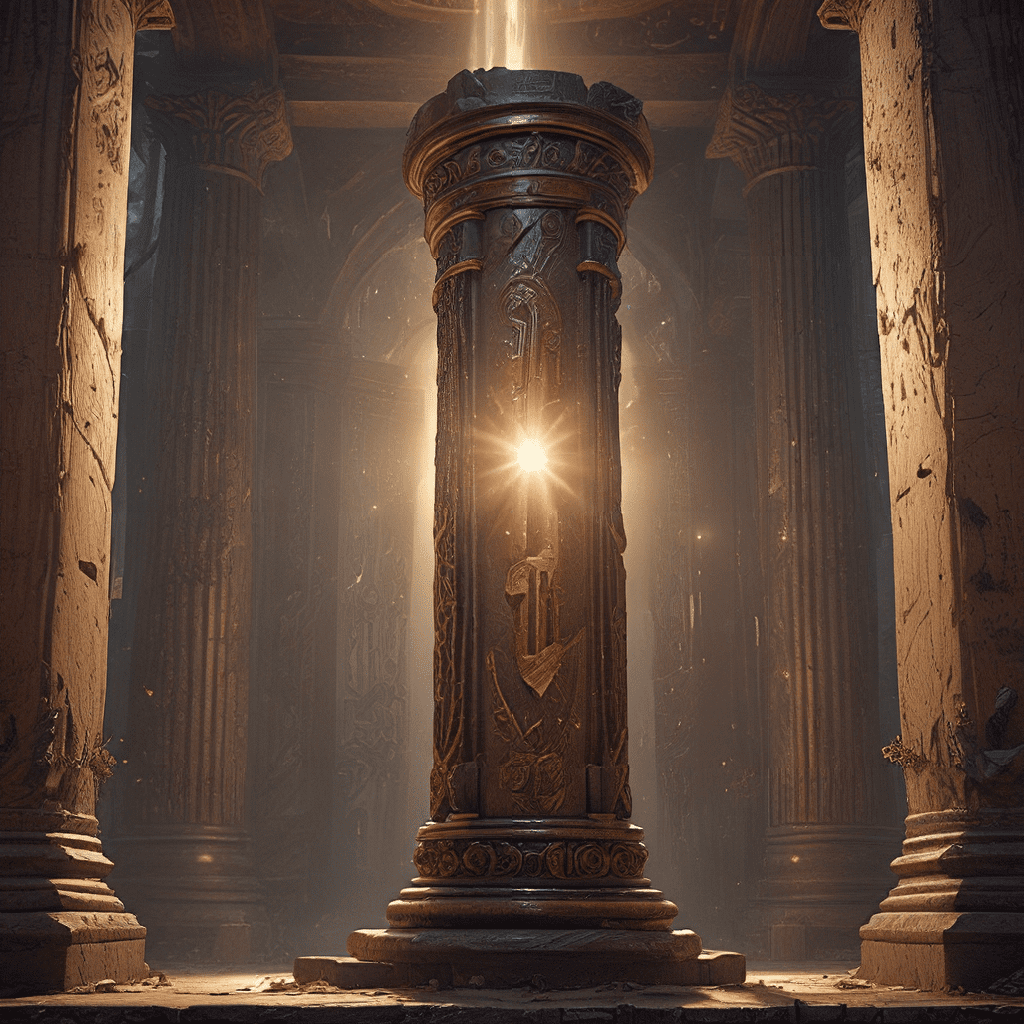The Djed Pillar: A Symbol of Stability and Endurance
1. Introduction
Ancient Egypt was a land of vibrant mythology and symbolism. Every aspect of their lives, from daily routines to grand monuments, was infused with meaning. Among the most powerful and enduring symbols was the Djed pillar, a representation of stability, endurance, and the very foundation of existence. This article delves into the Djed pillar’s significance within Egyptian culture, exploring its origins, symbolism, and presence throughout Egyptian life.
2. Origin and Meaning
The Djed pillar, visually resembling a stylized backbone or a bundle of reeds, is deeply connected to the god Osiris, lord of the underworld and embodiment of resurrection. The pillar’s shape evokes the strength of the spine and its vital role in supporting the body. This connection to Osiris links the Djed pillar to concepts of stability, endurance, and renewal. The pillar’s symbolism extends beyond physical strength to encompass spiritual resilience, the ability to overcome challenges, and the promise of rebirth. The Djed pillar also represents fertility and abundance, signifying the life-giving power of the Nile River and the bounty of the earth.
3. The Djed Pillar in Mythology
The myth of Osiris, a cornerstone of Egyptian mythology, highlights the Djed pillar’s crucial role in the cycle of death and resurrection. Osiris, murdered by his jealous brother Seth, was resurrected by his wife Isis. The Djed pillar, representing Osiris’s resurrected spine, symbolized his strength and the triumph of life over death. Other deities associated with the Djed include Geb, the earth god, who was often depicted with the pillar emerging from his back, reinforcing the connection between stability and the earth itself. Horus, Osiris’s son, is often seen holding the Djed pillar, highlighting the pillar’s importance in maintaining cosmic order. Thoth, the god of wisdom and knowledge, is credited with bringing the Djed pillar back to life after Seth shattered it, further emphasizing its connection to resurrection and restoration.
The Djed pillar’s connection to the concept of Ma’at, the cosmic order, is central to its significance. Ma’at represents harmony, balance, and justice, and the Djed pillar embodies these principles. The Djed’s stability and endurance symbolized the permanence of Ma’at, ensuring the proper functioning of the universe.
4. The Djed Pillar in Rituals
The Djed pillar played a prominent role in funerary rites and rituals. It was believed that the deceased could re-enter the world of the living through the Djed, representing their resurrection and entry into the afterlife. The Djed’s presence in temples, often depicted in monumental scale, symbolized the temple’s connection to the divine and its role in maintaining cosmic order. During ceremonies, priests would carry the Djed pillar, symbolizing the restoration of Ma’at and the renewal of life. Offerings and prayers were often made at the base of the Djed, signifying a connection to the divine and a request for protection, guidance, and stability.
5. The Djed Pillar in Art and Architecture
The Djed pillar is a recurring motif in Egyptian art, appearing in a variety of forms and contexts. It is depicted in hieroglyphs, serving as a visual representation of the word “Djed” itself, and signifying stability, endurance, and renewal. Tomb paintings often showcase the Djed pillar, its presence symbolizing the deceased’s journey into the afterlife and their hope for a renewed existence. In temple architecture, the Djed pillar is often integrated into the structure itself, highlighting the temple’s connection to the divine and its role in maintaining cosmic order.
The Djed pillar’s artistic representations often emphasize its symbolic meaning. The pillar is frequently depicted with arms outstretched, signifying its ability to embrace and protect. The Djed is often adorned with decorative elements, such as lotus flowers, highlighting its association with fertility and abundance. The pillar’s presence in art and architecture served as a constant reminder of the importance of stability, endurance, and renewal in both the physical and spiritual realms.
6. The Djed Pillar in Everyday Life
The Djed pillar’s influence extended beyond religious rituals and grand monuments. Its symbolism was integrated into everyday life, serving as a reminder of stability and resilience. The Djed was frequently incorporated into jewelry, amulets, and household items. These objects, worn or displayed, carried the Djed’s powerful message of strength, renewal, and the enduring hope for a prosperous future.
7. The Djed Pillar
The Djed pillar stands as a testament to the enduring power of Egyptian mythology and symbolism. Its enduring presence across various aspects of Egyptian life highlights its significance as a representation of stability, endurance, and the very foundation of existence. The Djed’s powerful message of hope, resilience, and the promise of renewal resonates through time, offering a timeless symbol of strength and the enduring power of faith in the face of life’s inevitable challenges.



